

Qing Tombs
photos from 1991 and 1996
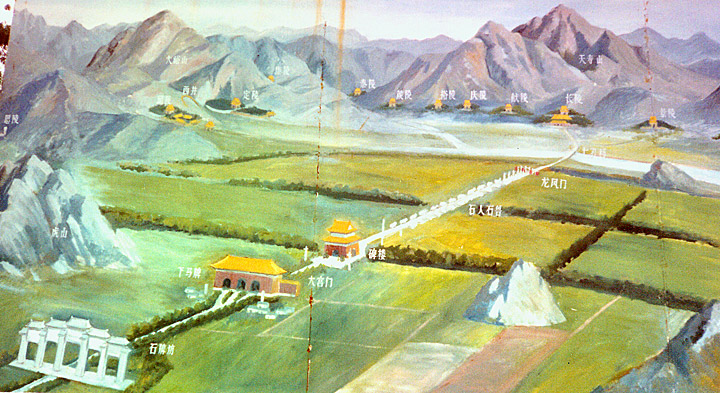

diagram of the tomb valley

photo of the tomb valley
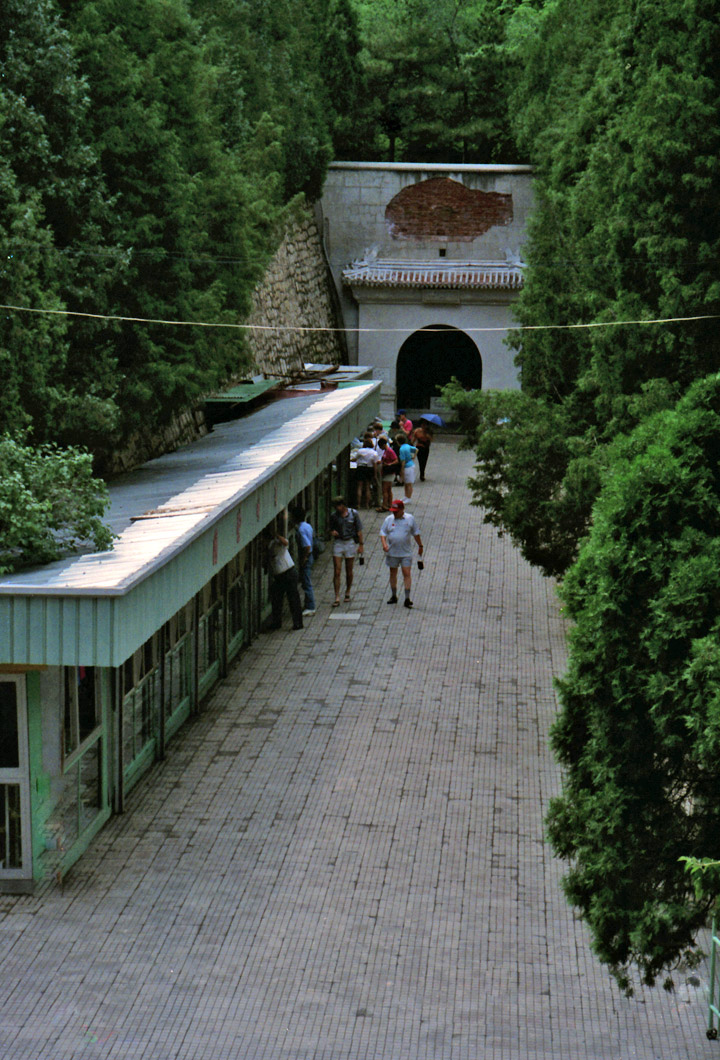
entrance to a tomb
The Qing (Ch'ing) Empire
After 1683 the Ch'ing rulers turned their attention to consolidating control over their frontiers. Taiwan became part of the empire, and military expeditions against perceived threats in north and west Asia created the largest empire China has ever known. From the late 17th to the early 18th century Ch'ing armies destroyed the Oyrat Empire based in Dzungaria and incorporated into the empire the region around the Koko Nor (Blue Lake) in Central Asia. In order to check Mongol power, a Chinese garrison and a resident official were posted in Lhasa, the centre of the Dge-lugs-pa (Yellow Hat sect) of Buddhism that was influential among Mongols as well as Tibetans. By the mid-18th century the land on both sides of the Tien Shan range as far west as Lake Balkhash had been annexed and renamed Sinkiang (ďNew DominionĒ).
Text from Encyclopedia Britannica

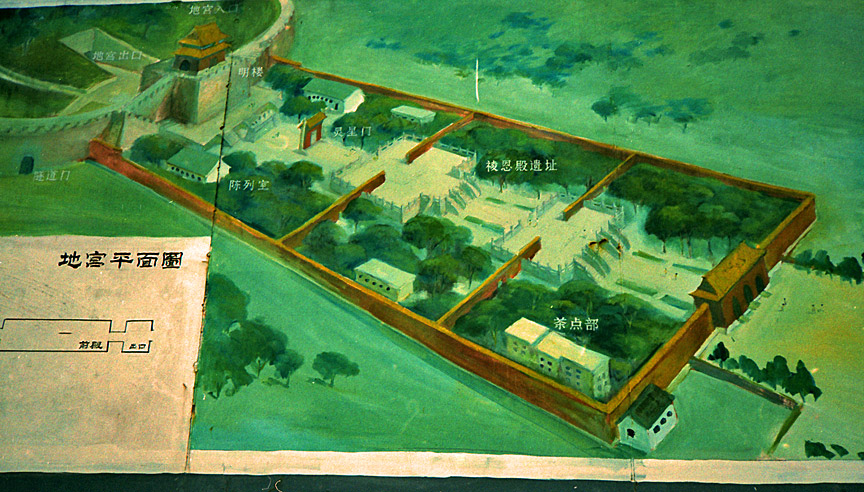
tomb entrance detail
Military expansion was matched by the
internal migration of Chinese settlers into parts of China that were dominated
by aboriginal or non-Han ethnic groups. The evacuation of the south and
southeast coast during the 1660s spurred the westward migration of an ethnic
minority, the Hakka, who moved from the hills of southwest Fukien, northern
Kwangtung, and southern Kiangsi. Although the Ch'ing dynasty tried to forbid
migration into its homeland, Manchuria, in the 18th and 19th centuries Chinese
settlers flowed into the fertile Liao River basin. Government policies
encouraged Han movement into the southwest during the early 18th century, while
Chinese traders and assimilated Chinese Muslims moved into Sinkiang and the
other newly acquired territories. This period was punctuated by ethnic conflict
stimulated by the Han Chinese takeover of former aboriginal territories and by
fighting between different groups of Han Chinese.
Text from Encyclopedia Britannica
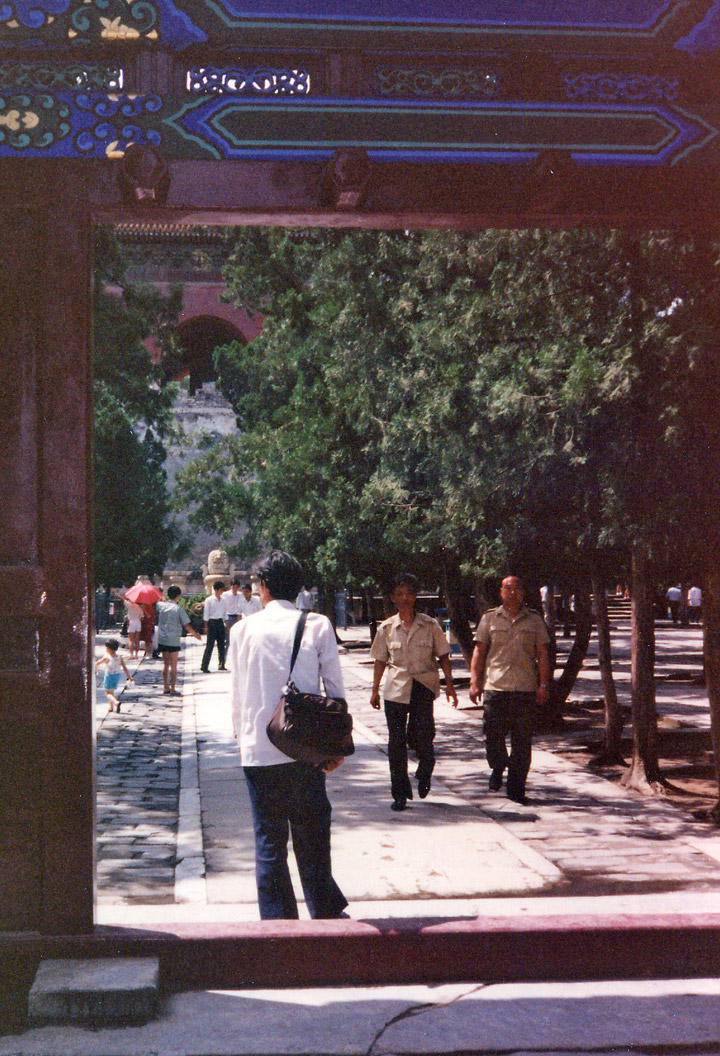
tomb park
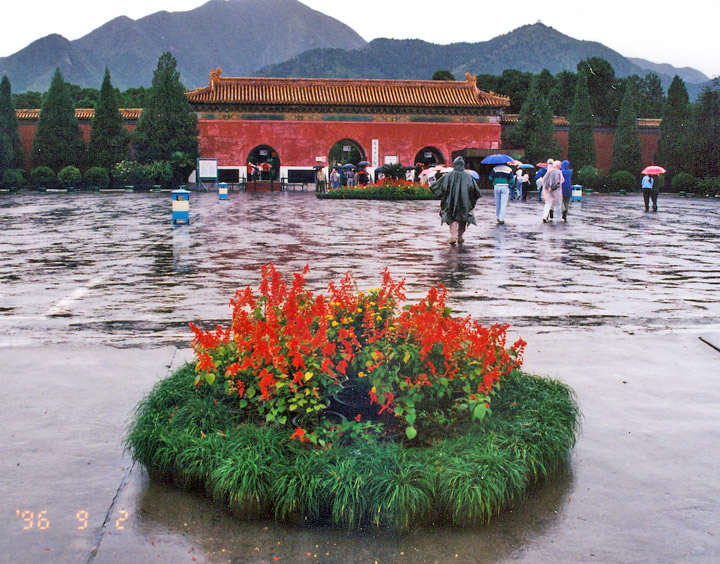
entering on a rainy day
Ming Tombs
In the northwestern suburbs are tombs
of most emperors of the Ming dynasty, who ruled in China from 1368 to 1644. The
tombs are approached by the long Avenue of the Animals, lined with marble lions,
elephants, camels, and horses.
Text from Microsoft Encarta
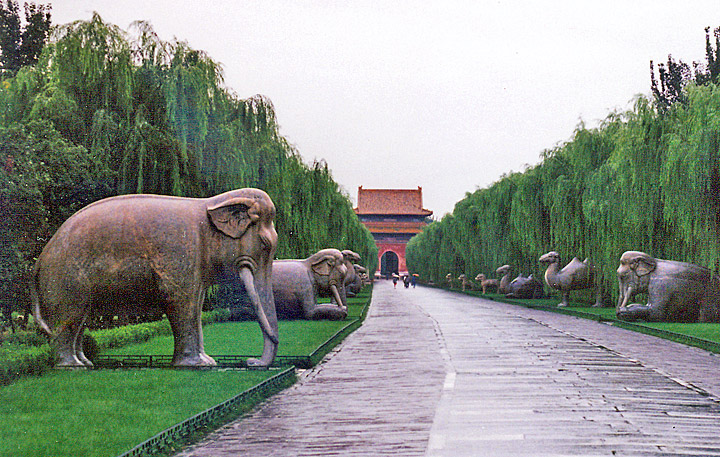
Avenue of the Animals
Ineptitude on the throne, bureaucratic factionalism at court, rivalries among Mongol generals, and ineffective supervision and coordination of provincial and local administration had gravely weakened the YŁan government by the 1340s. And in 1351 disastrous flooding of the Huang and Huai river basins aroused hundreds of thousands of long-oppressed Chinese peasants into open rebellion in northern Anhwei, southern Honan, and northern Hupeh provinces. Capitalizing on the breakdown of YŁan control, rebel movements spread rapidly and widely, especially throughout central China. By the mid-1360s large regional states had been created that openly flouted YŁan authority: Sung in the Huai Basin, under the nominal leadership of a mixed Manichaean-Buddhist secret-society leader named Han Lin-erh; Han in the central Yangtze Valley, under a onetime fisherman named Ch'en Yu-liang; Hsia in Szechwan, under an erstwhile general of the rebel Han regime named Ming YŁ-chen; and Wu in the rich Yangtze Delta area, under a former Grand Canal boatman named Chang Shih-ch'eng. A onetime salt trader and smuggler named Fang Kuo-chen had simultaneously established an autonomous coastal satrapy in Chekiang. While YŁan chieftains contended with one another for dominance at the capital, Ta-tu (present-day Peking), and in the North China Plain, these rebel states to the south wrangled for survival and supremacy. Out of this turmoil emerged a new native dynasty called Ming (1368Ė1644).
Text from Encyclopedia Britannica
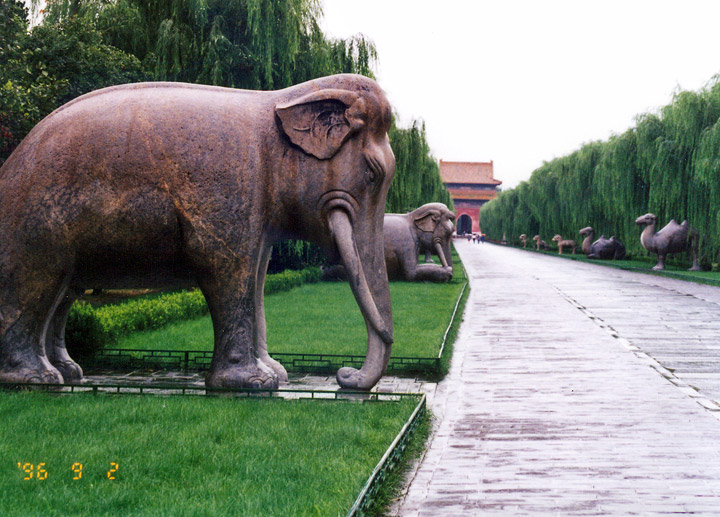

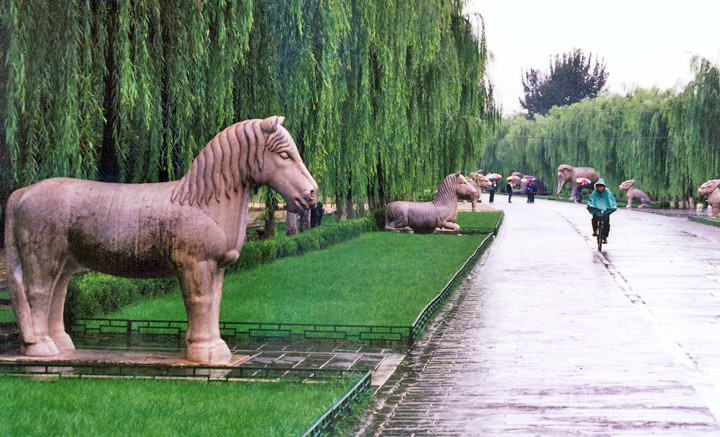
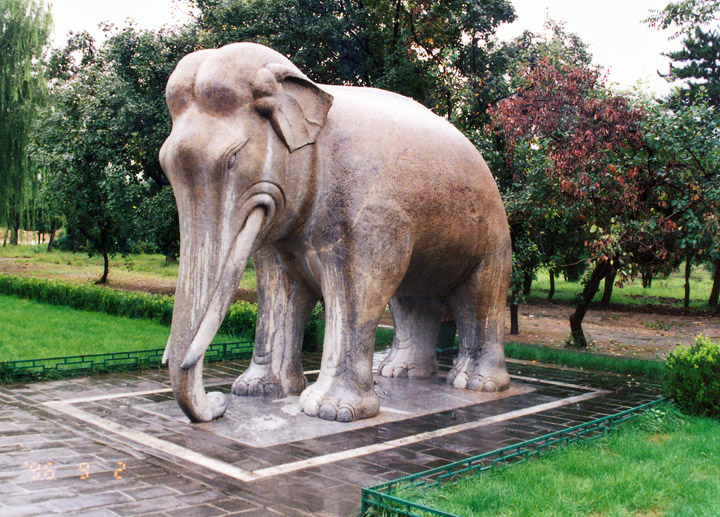


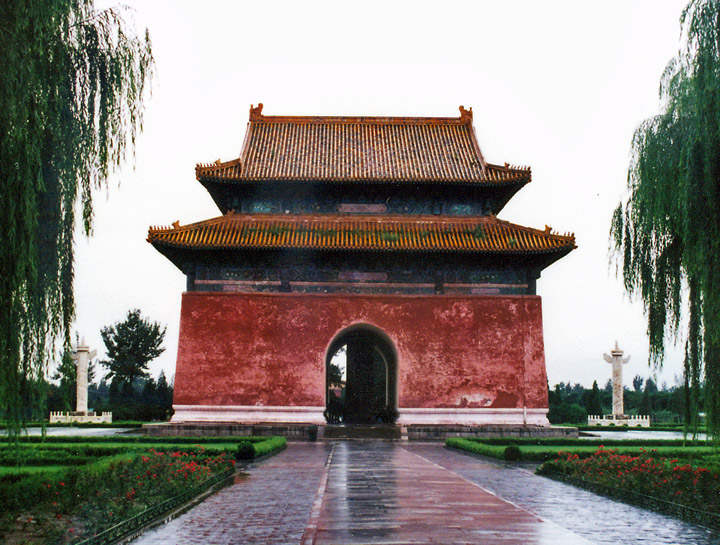
park pagoda
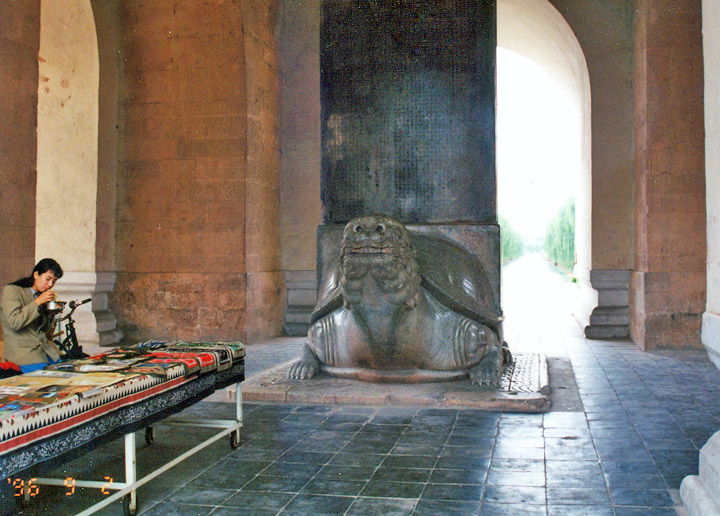
its interior

tomb entrance